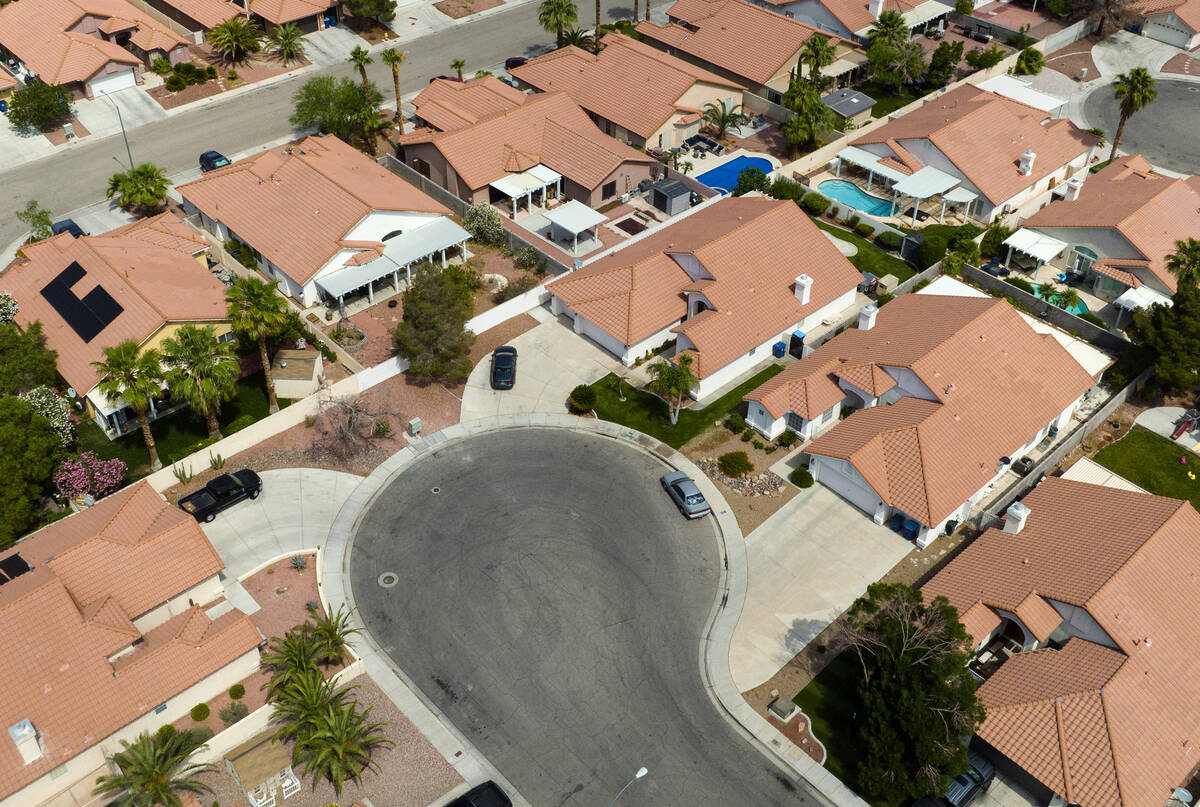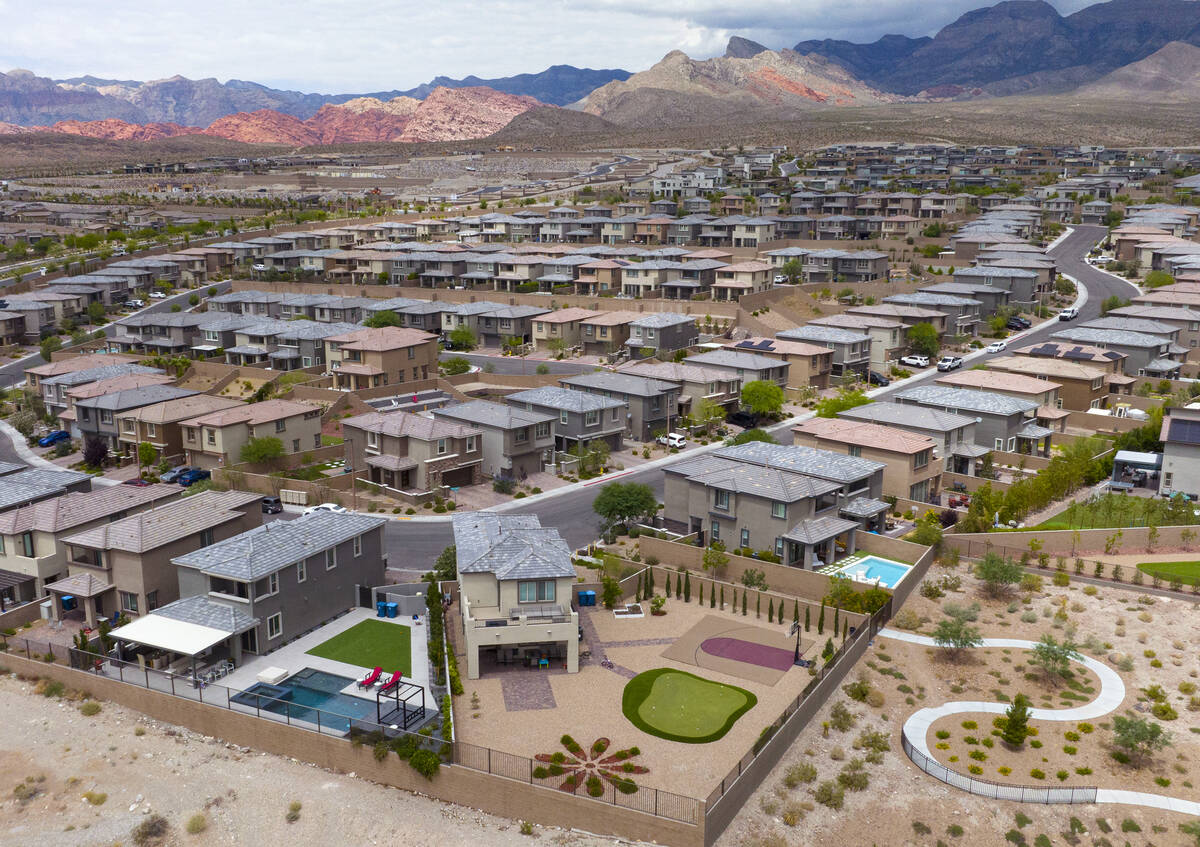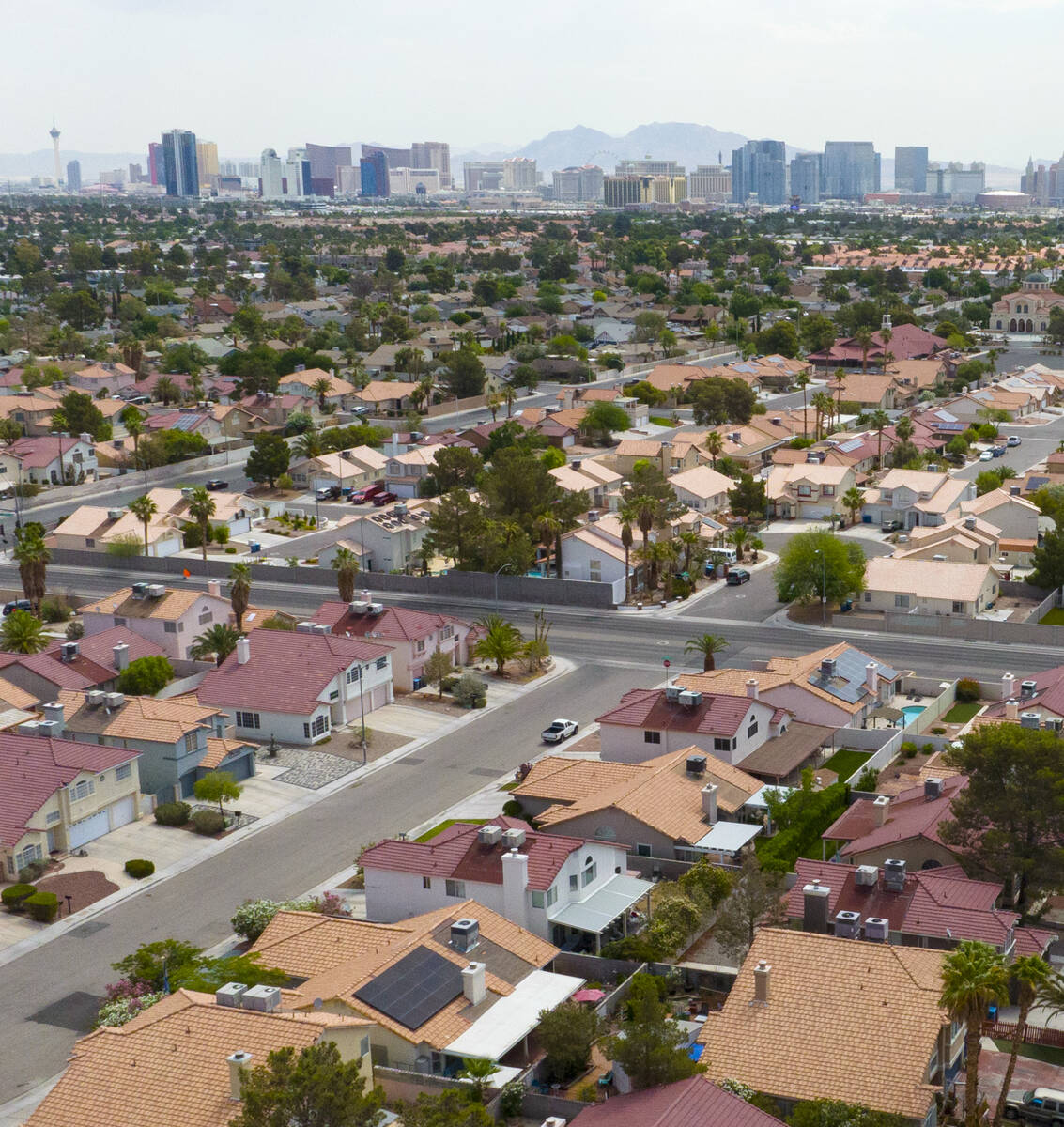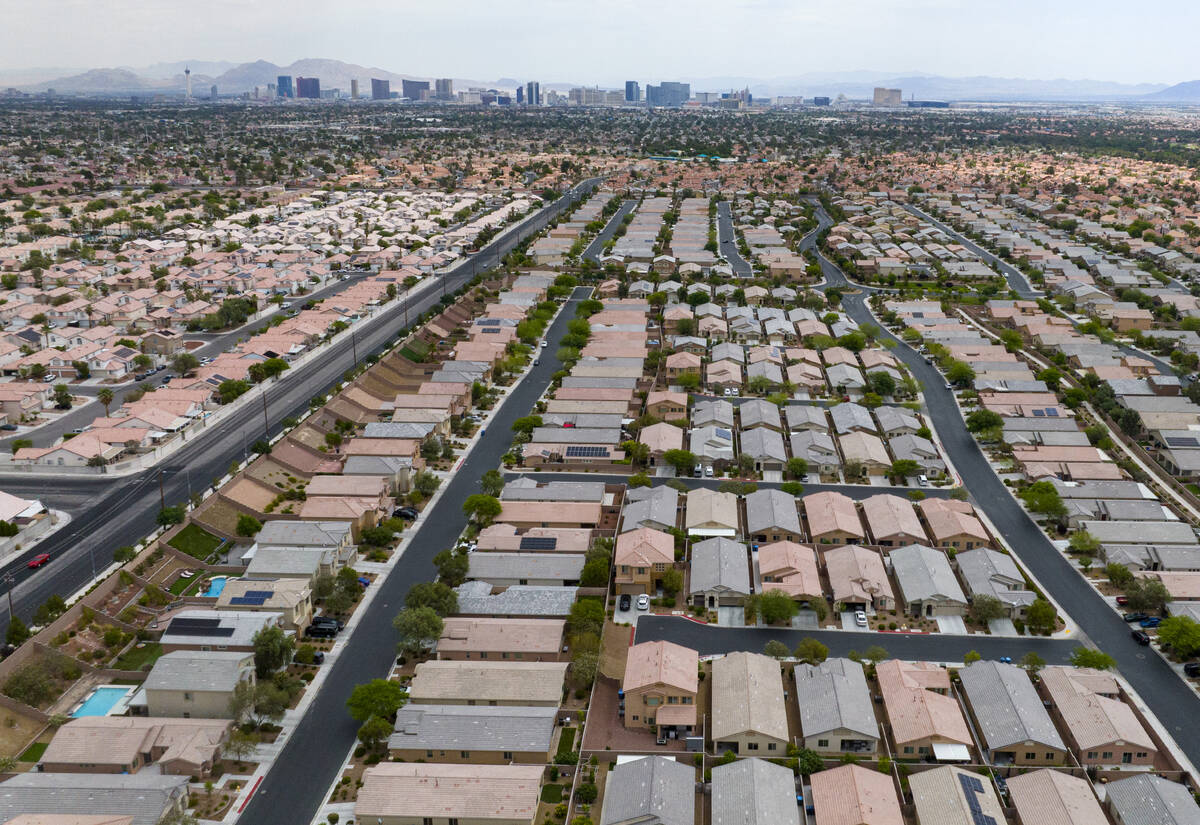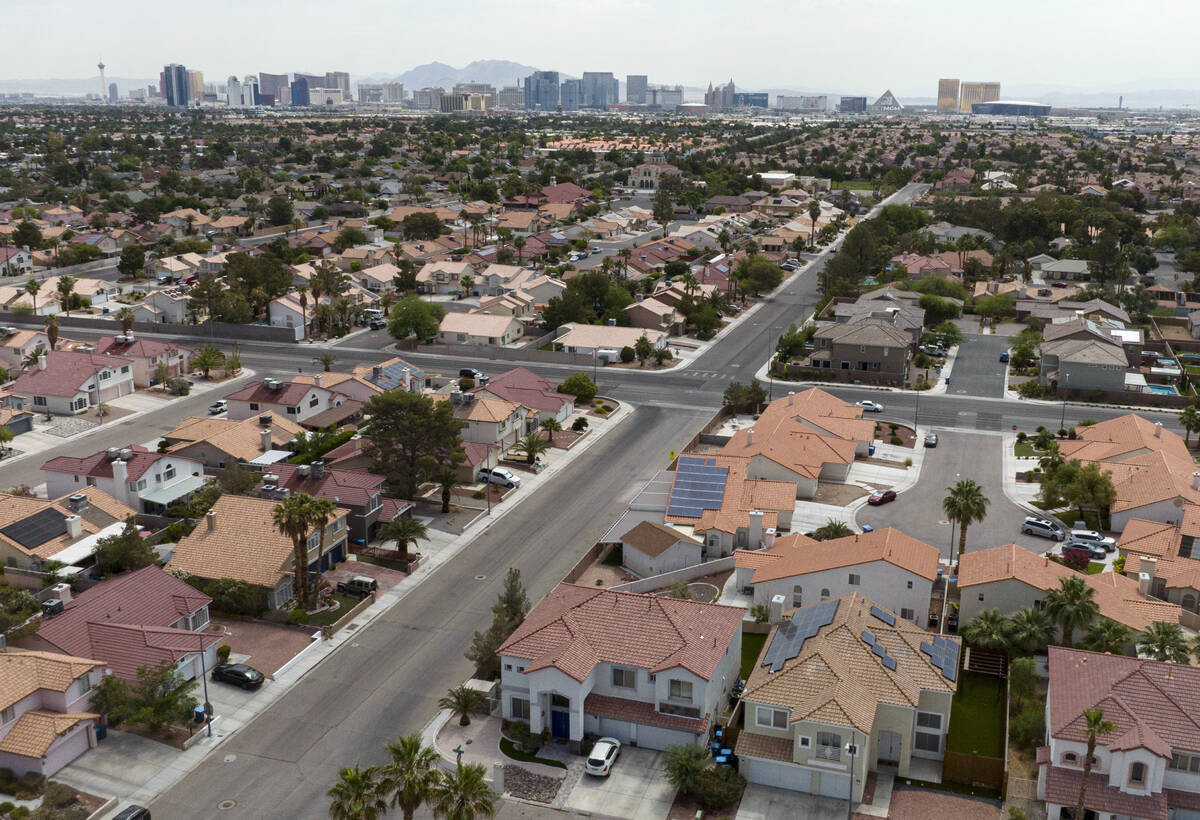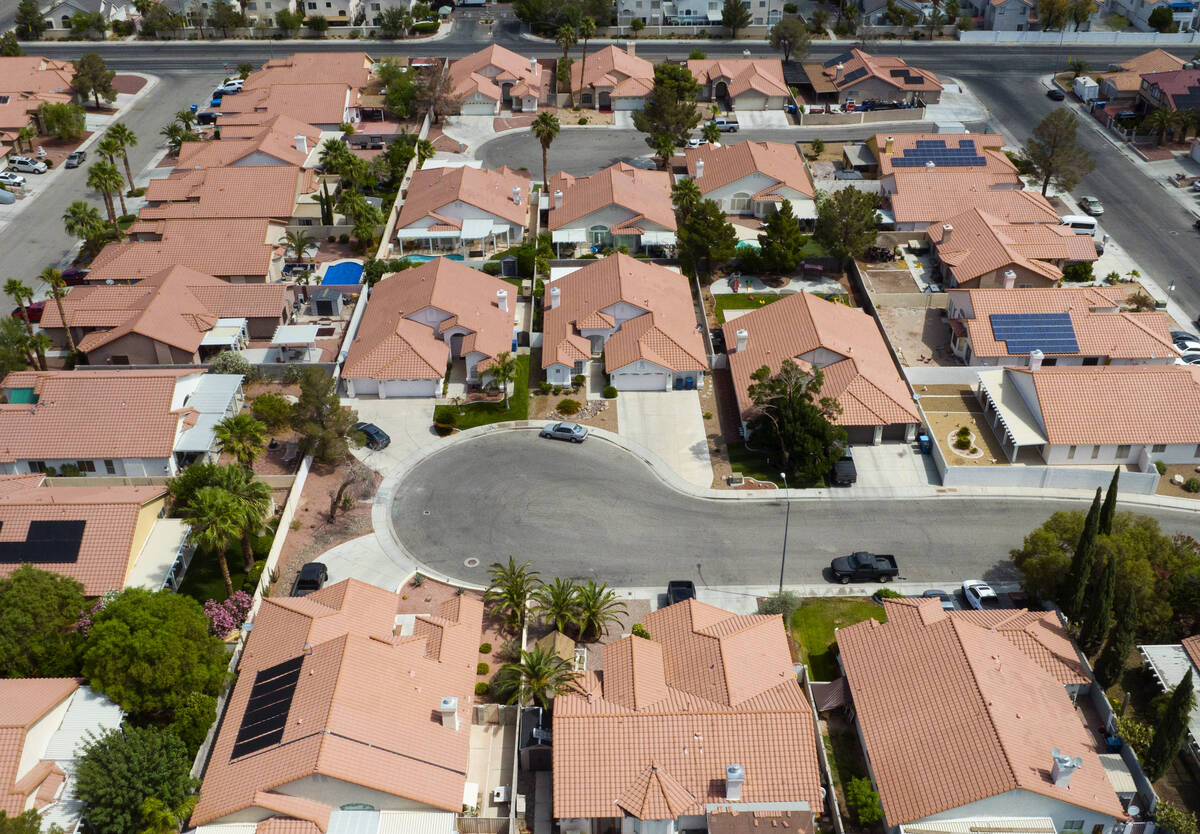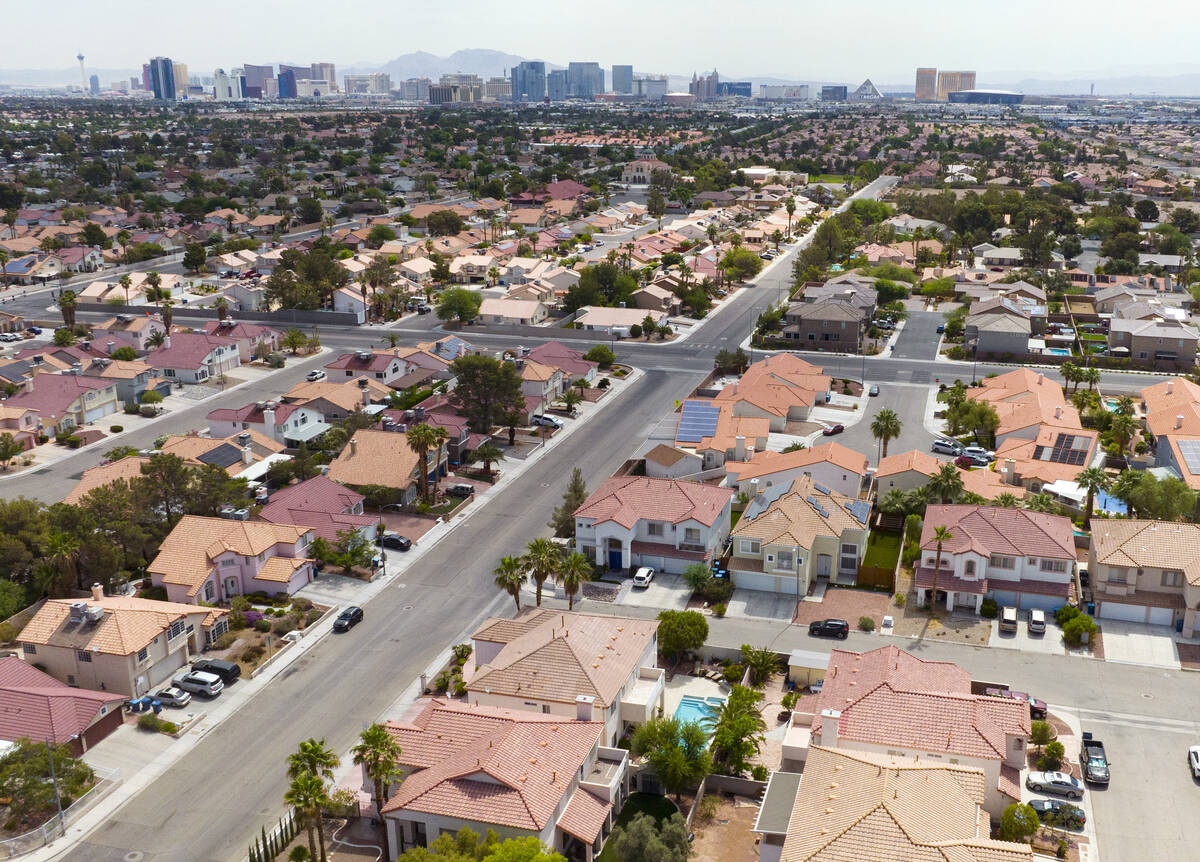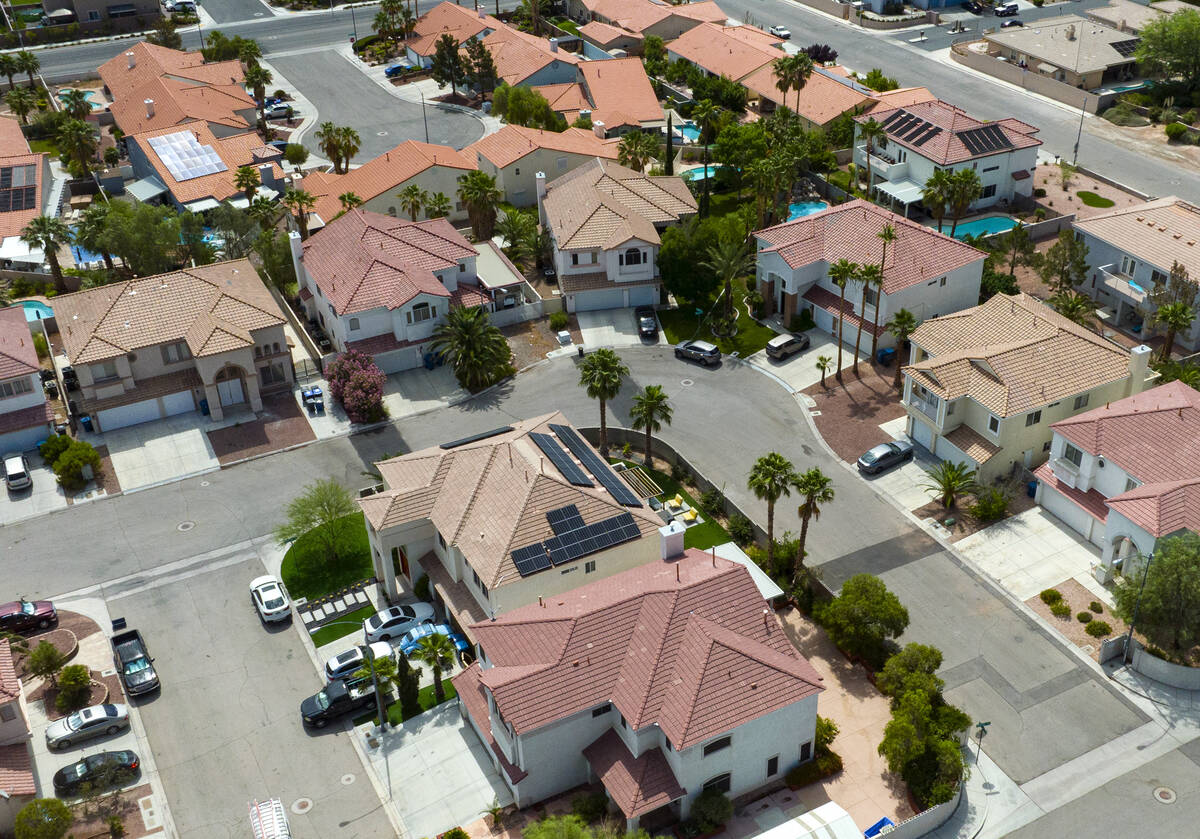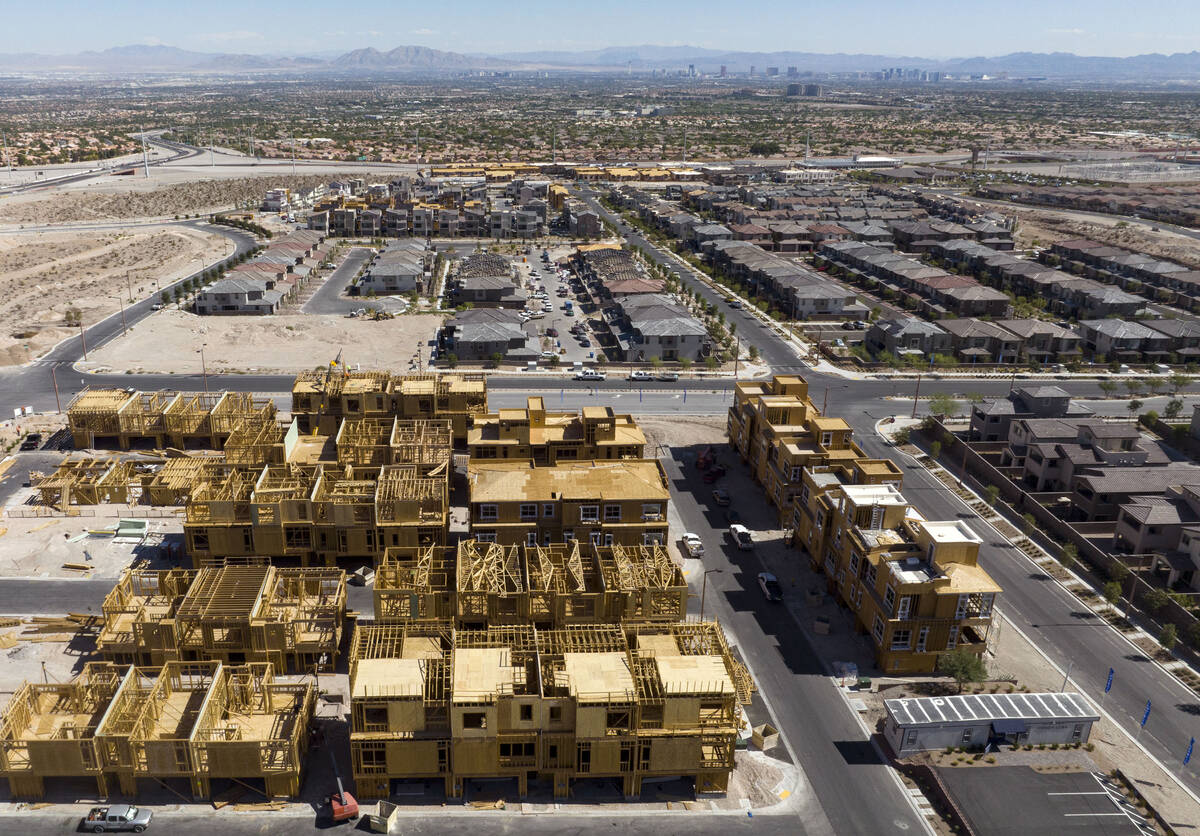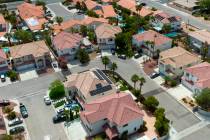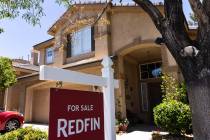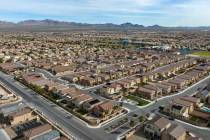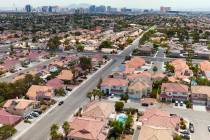Locked into low interest rates, or locked out of the housing market?
When Maggie moved to Las Vegas from Michigan with her family and bought a house in December of 2020, interest rates were incredibly low.
“I think we got an interest rate at (2 or 2.2) percent,” she said about the $396,000 house she and her husband bought in the Prescott Park area in the northwest valley. “But now my husband has retired and we want to move back to Michigan and we’re going to take a huge financial hit. We’re kind of screwed.”
Maggie, a homeowner who wanted to be identified only by her first name to avoid revealing her family’s financial information, said that luckily their real estate agent was able to sell their house for more than $500,000.
However, this solved only half the problem, she said. Now they have to try buying another home at much higher interest rates.
“We’re probably looking at 7 percent right now; I mean are you nuts?” Maggie said. Unfortunately, she said, her family has no choice but to buy high in their return to Michigan and hope interest rates fall so they can refinance their mortgage down the road.
Maggie and her family are not alone. All across the country, homeowners who bought when interest rates were low now sometimes feel “locked” into their homes and unable to move as the average mortgage rate sits at 6.69 percent — more than double what it was in June 2020.
It’s a phenomenon being felt by many nationwide as higher rates can add hundreds of dollars a month in costs for homebuyers, limiting how much they can afford in a market. According to data from Redfin, an online real estate brokerage, 23.5 percent of Americans with a mortgage at the end of the first quarter of 2022 had a rate under 3 percent, and 62 percent had one with a rate lower than 4 percent.
“Of course (interest rates) are significantly higher than they were even a year ago,” said Nadia Evangelou, a senior economist and director of real estate research for the National Realtors Association. “And so that can mean existing homeowners don’t want to sell their homes and give up that interest rate that they were able to secure, say back in 2021, so this locking effect comes in.”
Roller-coaster ride
The U.S. housing market has been on a roller-coaster ride since the start of the COVID-19 pandemic, which saw a buyer’s boom fueled by cheap money that subsequently sent prices to record highs in 2021.
Then, in the second half of last year, Southern Nevada’s housing market came crashing down to earth as rising interest rates — introduced to quell rising inflation — led to a sharp jump in mortgage rates. This in turn forced buyers to pull back and sellers to slash prices.
Steve Miller, a professor of economics at the Lee Business School at the University of Nevada, Las Vegas, said the Federal Reserve’s top priority now is reducing inflation, which is running about 4 percent year over year, and its primary tool is raising interest rates.
“I think what is frustrating the Fed right now is inflation seems to be a bit sticky,” Miller said. “The inflation rate came down pretty quickly (the rate hit 8 percent in 2022) but for the last few months, it’s kind of been sticky.”
Miller said this has helped create the phenomenon within the housing market where people like Maggie who bought when rates were low can’t afford to re-enter the housing market unless they’re willing to make much higher monthly mortgage payments.
“You have people who are living in homes that they could not probably afford at current interest rates, and so what do you do? The best thing for people to do is to continue to live there,” he said. “If you’re making that monthly payment it’s good, but the problem is that if you want to move you have to sell your house and then can you afford to get back in?”
However this creates a complicated ripple effect. National data indicates this phenomenon may be contributing to a supply issue all over the country. And, according to a June report from the National Association of Realtors, the pinch is hitting a specific demographic right now.
An unbalanced market
Households currently earning $75,000 – the median household income in the U.S. – can afford to buy a home up to $256,000. However, current housing market data shows that only 25 percent of the listings across the country have a price tag at, or below, $256,000. Five years ago this vast income group could afford to buy half of all available homes.
The news is better for households making more than $250,000 — 85 percent of the homes on the market are within their price range.
Evangelou, the Realtors association economist, said middle-income buyers “face the largest shortage of homes among all income groups, making it even harder for them to build wealth through homeownership.”
Brian Gordon, principal at Applied Analysis, a data resource company in Las Vegas, said the numbers paint a pretty clear picture right now.
“The market has an overwhelming majority of owners that are locked into lower mortgage interest rates than are available today, so they tend to remain in place and avoid overall higher housing costs by moving,” he said. “This is holding back inventory and simply leaving fewer homes to choose from, both for owner occupants and investors seeking rental properties.”
For Maggie, the Las Vegas homebuyer, the situation feels as if average Americans are getting pinched again by economic conditions out of their control.
“When are we going to catch a break? We have families and kids to feed, and everything costs twice as much now. If I’m paying twice as much for bread, why is it that the interest rate is still so high and I want to move into a new house, but I can’t because the interest rate is too high? Because everybody could afford it when there were low interest rates, but nobody can afford anything now.”
Contact Patrick Blennerhassett at pblennerhassett@reviewjournal.com or 702-348-3967.



